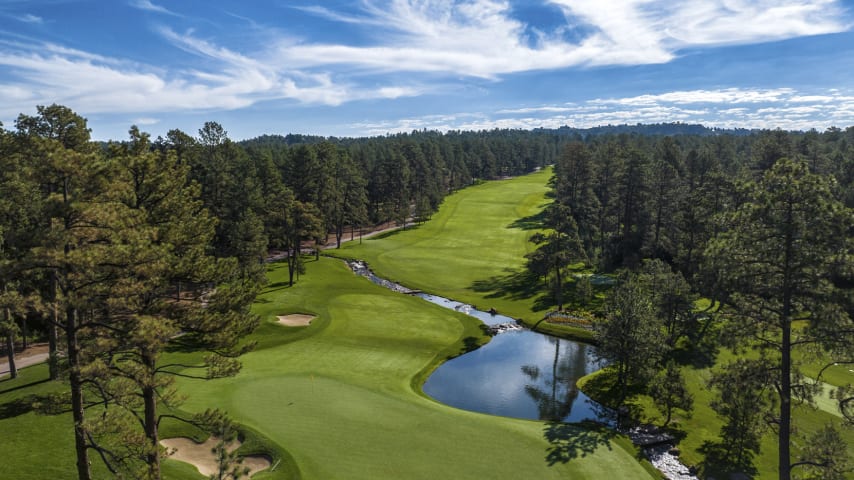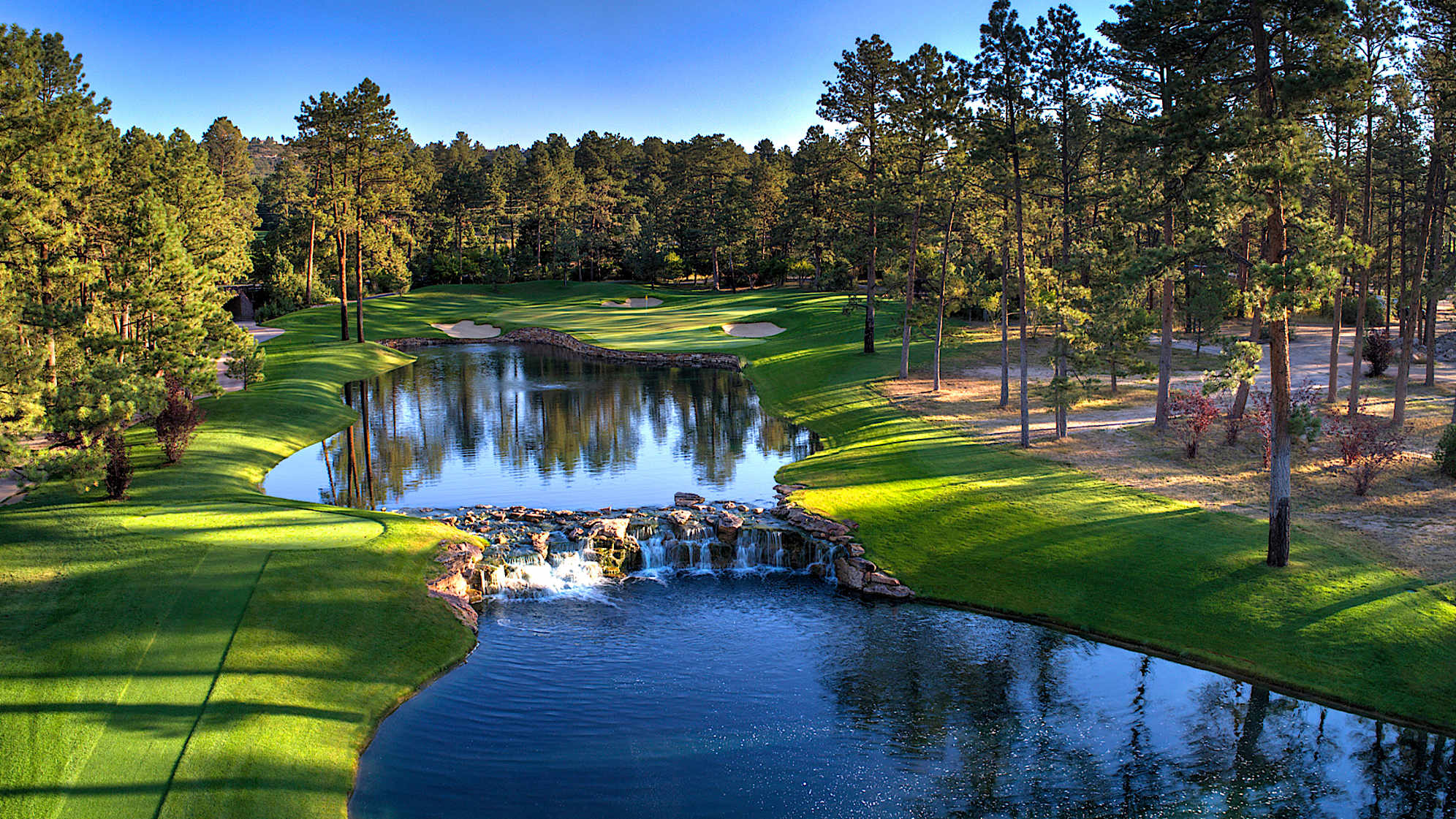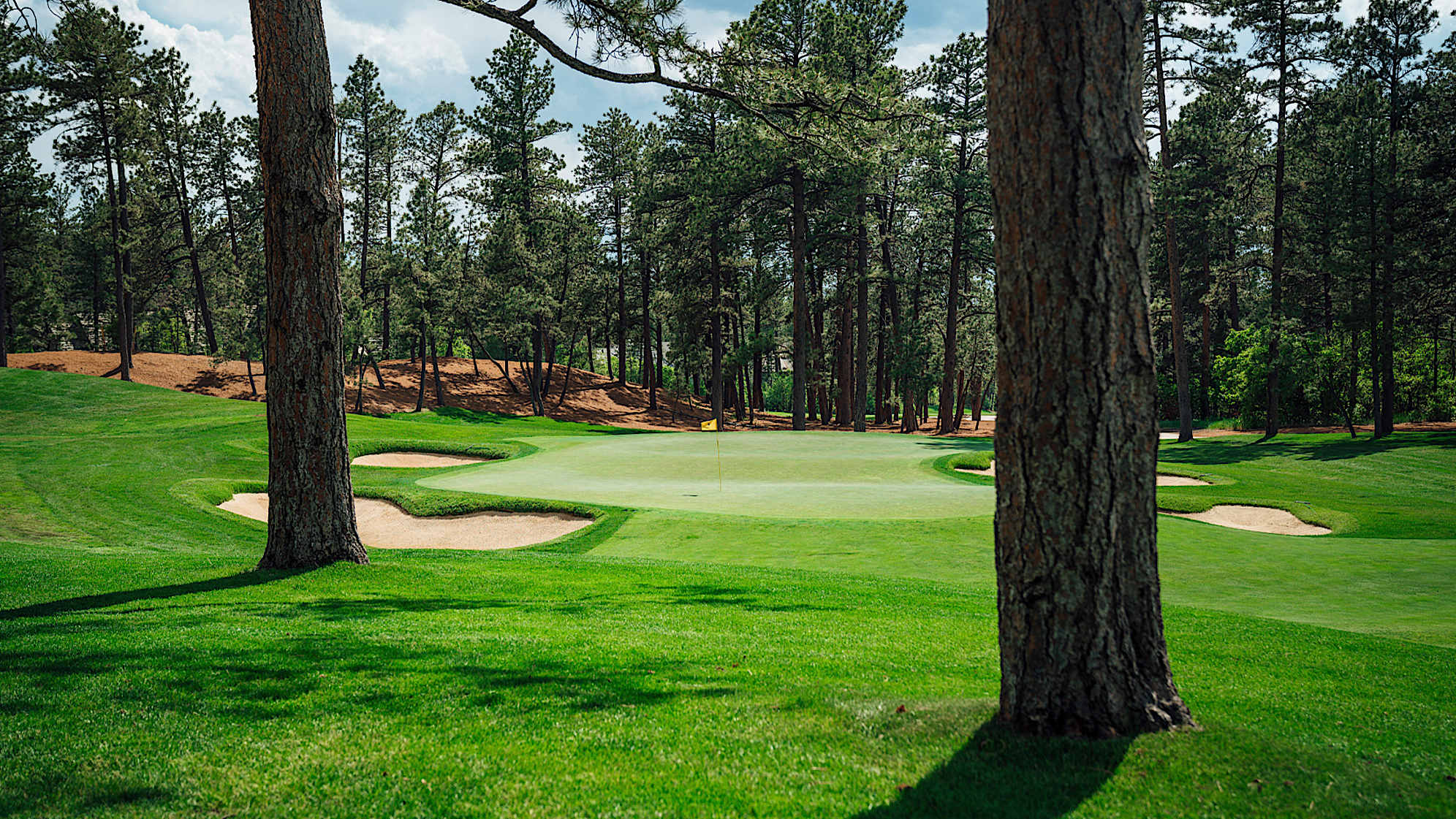Five things to know: Castle Pines Golf Club
6 Min Read
Written by Bradley S. Klein
PGA TOUR returns to mile-high course for this week’s BMW Championship
The top 50 in the FedExCup arrive at this week’s BMW Championship knowing that their spots in next year’s Signature Events are secure. Now they have their sights on the 30 spots in the TOUR Championship and the opportunity to claim the PGA TOUR’s season-long prize.
The BMW is returning to Colorado for the first time in a decade, after previously being played at nearby Cherry Hills in 2014. Castle Pines Golf Club is returning to the PGA TOUR schedule for the first time since 2006 after a two-decade run hosting The International, a Stableford event that featured winners like Ernie Els, Davis Love III, Vijay Singh, David Toms, Jose Maria Olazabal and Phil Mickelson.
This week’s field will need to make a quick adjustment to Colorado’s altitude after competing last week in the heat and humidity of Memphis, Tennessee. To get you prepared, here are five things to know about Castle Pines Golf Club in Castle Rock, Colorado:
1. Familiar venue
Castle Pines GC is one of the most coveted addresses, golf or otherwise, in the Denver-metro area, and one of the most prominent and luxurious real estate golf developments in the country. Located just 27 miles due south of downtown Denver, Castle Pines hosted The International, a modified Stableford event on the PGA TOUR, from 1986 to 2006.

Rod Pampling during the fourth and final round of The INTERNATIONAL held at Castle Pines Golf Club in 2006. (Stan Badz/PGA TOUR)
The BMW Championship, which traces its lineage to the Western Open in 1922, returns to the Denver area for the first time since 2014, when Billy Horschel won at Cherry Hills Country Club. The Western Golf Association’s Evans Scholars Foundation is the tournament’s chief charitable beneficiary.
Former Broncos quarterback Peyton Manning made a hole-in-one in his first round as a Castle Pines member. John Elway also is a member at the club that boasts on its website to offer “the best day of golf in America.”
2. Augusta in the mountains
Castle Pines ranks among the best of Nicklaus Design’s approximately 400 projects. Dense ponderosa pines frame holes set into the rolling terrain of the Rocky Mountain Front Range. The course makes use of 325 feet of elevation change, with platform tees that showcase the landing areas in the foreground and the dramatic, towering landscape in the background. Few courses offer such theater, with long views of both the course and the scenic Mountain West.
It's often said that given the choice between a good owner and a good piece of land, an architect would opt for the good client. At Castle Pines, Nicklaus had both. Jack Vickers, who made his money in the oil and gas business, was the developer of Castle Pines.
He moved to Denver in 1969 and was driving around his new hometown when he stumbled across the land that would become Castle Pines. On a whim, he turned down Happy Canyon Road, according to the club’s history. He stopped halfway up the drive, hiked to the top of a rocky ridge and discovered a panoramic view of the mountainous terrain.
It took him 12 years to acquire the property from the various landowners. As the Denver metro area spread south, the roads and services arrived for a high-end housing development.
With the land acquired, he turned to Jack Nicklaus to design his new course. Vickers and Nicklaus toured the land both by foot and helicopter, joking that though they rarely agreed, they were able to produce one of the best courses in the country. Construction began in 1979 and Castle Pines Golf Club officially opened to instant acclaim in October 1981.

A photo from the PGA TOUR archives of hole No. 18 at Castle Pines. (Sam Greenwood/PGA TOUR)
Its ponds, flowery gardens and carefully crafted views evoke the spirit of the kind of place Vickers set out to create – a western version of Augusta National.
From the high point of the first tee looking south, the opening three holes take you steadily downward, 300 feet in all. From there, the course turns uphill to form a neat symmetry of nines: the front looping counterclockwise, the back clockwise. For all of the topography it covers, the elevation changes take place gradually, allowing the course to be very walkable and amenable to one of the largest caddie programs in the Mountain West.
3. Thin air thickens the plot
At an average altitude of 6,200 feet, the ball flies a lot farther at Castle Pines than at sea level. You’ll hear many say that the increased altitude adds 10% to the distance of shots, based on a general ratio that states that the thin air adds 1.7% of distance per 1,000 feet of elevation. Myriad other factors impact a shot’s distance, however, especially at altitude. They include a player’s launch angle, the loft of the club and the heat and humidity levels.
But the general rule says that a 300-yard drive at sea level travels 332 yards at Castle Pines and a stock 7-iron shot of 180 yards goes nearly 200. In other words, it’s about a club-and-a-half difference from sea level. Add in the dramatic elevation changes at Castle Pines, and caddies will have their hands full this week.
Castle Pines will be the longest course in PGA TOUR history, measuring 8,130 yards. While it’s an eye-popping number, it’s worth remembering that it’s approximately equivalent to 7,350 yards at sea level. That’s fairly standard for the PGA TOUR. For the amateurs, Castle Pines plays to a 79.1 rating and 155 slope, meaning even your scratch handicap would have trouble breaking 80 there in everyday conditions, let alone when the course is primed for PGA TOUR competition.
The first hole provides the perfect example of how the scorecard can be deceiving. It’s listed as a 659-yard par 5, but it should be reachable for much of the field. It’s the equivalent of a 599-yard hole at sea level, and that doesn’t factor in the 100-foot drop from tee to green.
4. Three holes to watch
Every hole counts the same, of course, but three in particular merit close watching at Castle Pines:
No. 4: 254 yards, par 3
- At a low point of the property and in the southwest corner of the routing, this elegant hole requires a controlled, left-to-right tee shot into a green flanked on the right by a steep barranca. The tee sits 30 feet above the green, offering a great view of both the putting surface and the distant mountains. A left or right miss to this fairly narrow green will mean trouble – there are two bunkers on either side of the green, plus that steep-faced wash on the right. A new back tee has been installed left of the old one, and this brings the danger right of the green even more into play than before.
No. 14: 655 yards, par 5
- Along the long par-5 opening hole, this one plays downhill, with a 100-foot drop from tee to green, making it reachable in two for players who find the fairway. The landing zone is only 25 yards wide and framed tightly on both sides by pines, so hitting the short grass won’t be easy. Recent renovation work moved a lovely diagonal cross-stream 40 yards closer to the green and more into play on the second shot; it now feeds into a pond that guards the left side of the green. With the fairway canted modestly right to left and thus forcing a hook stance for most players, the goal here is not to overcook a long approach. The stream’s repositioning will also become a factor for anyone missing the fairway, since they will be forced to lay up. For right-handed players hitting a power draw off the tee, this hole will be a green-light special and offer a distinct advantage.

A look at the 14th hole at Castle Pines Golf Club. (Courtesy WGA)
No. 17: 532 yards, par 5
- Everyone will have a go at this green in two, often with a short iron, if they can hold the fairway off the tee. At only 532 yards (481 effective sea level yardage), it plays uphill, some 100 feet from tee to green. It’s also a hard dogleg left, requiring proper positioning. The hole was always an eagle-fest during The International and will be the easiest in relation to par for the BMW. Still, players will need to keep it in play off the tee – a hallmark of Nicklaus for decades as both a champion golfer and a noted course designer.
5. Arid climate, pristine conditions
Castle Pines stays in stunningly pristine shape in part because of its arid climate. There was no rain in June and July, but August brings “monsoon season,” with afternoon rains that can add up – as much as 2 inches through the first two weeks.
Maintenance is in good hands. Director of Golf Course and Grounds Scott Pavalko, who’s been on Castle Pines’ staff for two years, has eight editions of the Memorial Tournament presented by Workday and the 2011 BMW Championship on his resume. Course superintendents Trevor Meints and Brandon Wollesen are part of a 56-person crew that will be aided by 45 tournament volunteers. The bentgrass greens, averaging 5,600 square feet, will be cut down to 1/10 inch for the tournament and roll at around 13.5 on the Stimpmeter. That will emphasize precise approach shots on greens that offer all sorts of subtle contours. There are false fronts and closely cropped peripheral areas that lead to bunkers, ponds and steep falloffs.
With 27 acres of fairway, the landing areas are not expansive and will require precise tee shots to narrow landing areas 300-330 yards from the back tees. Streams, ravines, ponds, steep fairway bunkers and the occasional signature tree further intrude upon driving lanes and give long hitters reason to gear back and use caution.








